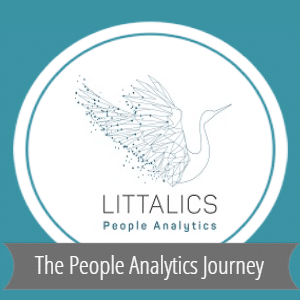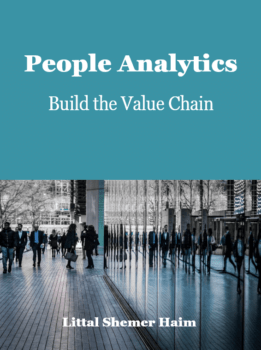This blog is a part of four blog series that covers my key takeaways from sessions and demos at Unleash, Paris 2019. The 1st blog was focused on the future of work and learning. Future blogs will be grounded on People Analytics practices and insights about the digital transformation of HR. This blog covers new technologies for career paths and inner mobility, of which I participated in a demo session. It is worth to mention that in 2020, I’ll cover the entire category of career path and inner mobility in a special report that will include many more vendors – only some were present on the expo floor at the event.
People’s ownership over career management
In the new world that is driven by data, placing people at the forefront means using new tools for Talent Management, which are based on new data sources. However, as I see it, Talent Management is only one side of the equation, the organization’s side. What about the other side – the talents’ side? In a world where employees are already considered as stakeholders, and when the consumerization of HR data is almost old news, we can’t ignore people’s ownership over their career management and their data. Personally, this is my favorite domain in the industry, which is aligned with my background in Positive Psychology. I can only be thrilled to find more and more solutions that enable people to thrive by combining their abilities with opportunities. Therefore I explored some innovative solutions in this domain.
Career ladder becomes career climbing wall
It’s no secret: engaged employees stay longer and perform better. Matthieu Durif, Solution Consulting Director at Cornerstone OnDemand presented the way this HCM suite facilitates career mobility and helps to keep people happy, productive, and at their full potential. Engaging and intelligent HCM platforms can be used to identify high-performers and close talent gaps. At times when the career ladder becomes a career climbing wall, they can reduce time to productivity with targeted, predictive learning and retain employees by giving them more visibility on career development and job opportunities.
In his demo, Durif emphasized the importance of integrating data sources. Performance rating is important, but so does team collaboration. Dedicated learning paths are important, but so does personalized experience. Therefore, a platform that ties all ends is essential. Durif demonstrated this by a use case of an employee career path, from onboarding to promotion, and pointed to the manager’s involvement in this process.
My concern, however, and it is related to all platforms in this category, is the extra power offered to organizations. For the sake of personalized experience, do employees lose control over their learning data? What is the right balance between employee personal learning decisions and the control of her manager? Though this and other platforms are GDPR verified, I would prefer, as an employee, to take my learning data with me – as I decide to move on to another organization.
Intelligent platforms encompass the entire talent experience
Another Talent Experience Management platform that I saw is Phenom. In a nice live and interactive demonstration, Mahe Bayireddi CEO & Co-Founder presented how a single intelligent platform can encompass the entire talent experience by breaking silos. The integration of data from different sources, i.e., applicant tracking system (ATS), human capital management (HCM), Learning management system (LMS), and vendor management system, all under an Artificial intelligence layer that enables personalization, smart search, and user intent, enable to tie all experiences – candidates, recruiters, employees, and managers.
Talentsoft invited the audience in its demo to be the driving factor behind the change. Elodie Champagnat, Global Head of Product Marketing, talked about innovative opportunities to grow the organization: reinvent the way employees work by helping them to express their potential and by adopting the right technology to prepare the organization internally for what’s happening externally.
In her presentation, Champagnat pointed to future challenges, based on the latest research. First, 85% of future jobs haven’t invented yet. Secondly, 65% of children entering now to primary school will end up working in jobs that do not exist yet. Third, 45% of managers don’t feel comfortable in their ability to develop their teams. Therefore, we need technologies that accelerate the transformation, enable future skills management and continuous upskilling and reskilling plan, and empowerment for managers to become in-context coachers, with continuous conversation and dynamic goal setting. Talentsoft impressive new features can help to anticipate skills gap, encourage collaboration, accelerate productivity, and match the right people to new opportunities.
Invest in human capital today to thrive in the future of knowledge economy
Organizations across the globe are seeking to tip the talent balance in their favor. Betsy Kolkea, an HR Consultant at Meta4, shared some client stories with one thing in common: They are all focused on releasing talent’s full potential by leveraging digital transformation. This means that employees own their data and development and have visibility to opportunities, while managers optimize team delivery by talent tools and gain insights into talent strengths and vulnerabilities. Kolka presented the building block of such value proposition: First, functional integration – of core HR, Talent management, compensation, and workforce management. Secondly, efficient people processes, by guided actions, workflows, and HR ticketing. Lastly, equipping managers by automation and visibility to team data.
Another tool to act upon the future is offered by PeopleFluent. Stephen Bruce, Managing Director, presented the Talent Management imperative for the future knowledge economy. Since in 10 years from now, according to expert predictions, more than 80% of the jobs will be roles that don’t exist today, new skill sets and competencies will be needed. The companies that will thrive in this future knowledge economy are those that invest in intellectual and human capital today, i.e., rethink, retool, and reskill their workforces. Bruce discussed trends in Talent Management technology. He emphasized the importance of linking an agile talent assessment approach with robust talent acquisition, ongoing performance management, microlearning programs, and analytics that enable c-suite executives to track-back to organizational success.
Bruce offered some tips to handle the pace of change: Blend communication into your talent and learning strategies. Teach new skills just ahead of need. Balance “just in case” learning with “Just in time” performance support systems. Augment “learning on the job” through immersive techniques that accelerate experience.







